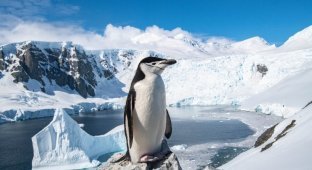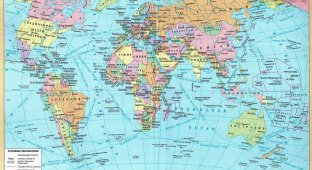Unconventional facts about the geography of Australia that may surprise you (22 photos)
We all know from school that Australia is the smallest continent. Some may add that it is not a continent at all, but a subcontinent. One way or another, Australia is a full-fledged continent, and quite a large one. So large that it can even compete in size with... the Moon! 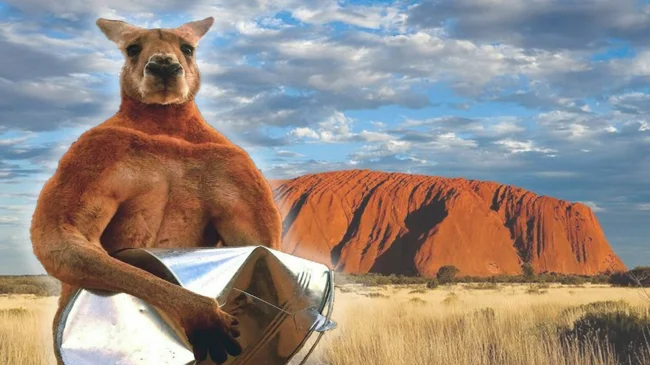
What do you mean, "fast"? This is a monument to the continent! However, if you did not skip geography classes at school, then you should remember that continents are constantly in motion. There were once ancient continents like Pangea, and then they broke up and formed modern continents. 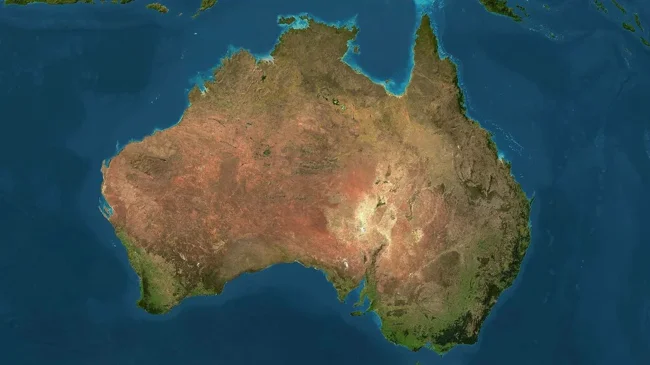
Australia rests, forgive the tautology, on the Australian tectonic plate. And it moves north at a speed of about 7 cm per year. No other continent moves so fast.
Because of this, Australia's coordinates are constantly changing, and maps have to be updated. This also causes bad processes in the earth's crust, which can potentially lead to strong earthquakes.
Australia is home to one of the oldest and most desolate deserts in the world
The Gibson Desert in Western Australia is one of the most sparsely populated areas on the planet. Its area is about 156,000 km², but there are practically no permanent settlements there. 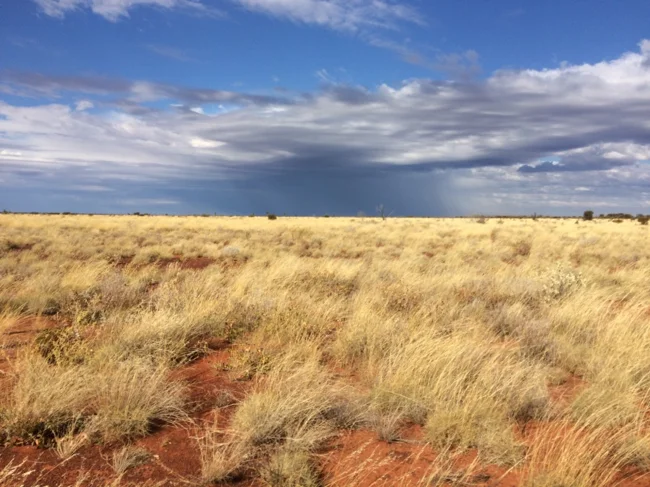
But it is picturesque here.
Only a few groups of Australian aborigines live in this inhospitable vale. Their numbers are very small, and they live in small settlements or lead a nomadic lifestyle.
The Gibson Desert also claims to be the oldest desert in the world. Its age is estimated at millions of years, and it still retains its unique landscapes.
Australia has elevated levels of ultraviolet radiation
Because of its proximity to the equator, Australia is exposed to elevated levels of ultraviolet radiation. In the summer months, the UV index can reach 11.
So sunbathing in Australia is not a good idea. There is a serious risk of causing melanoma. 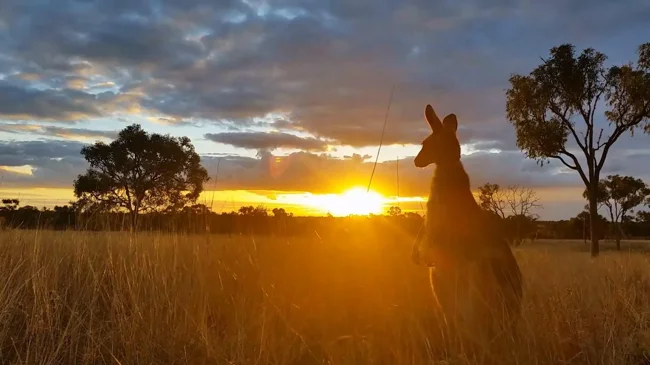
But you can safely watch beautiful sunsets.
So it should come as no surprise that Australians bundle up to protect their skin from direct sunlight.
Australia has one of the largest concentrations of dinosaur footprints
One of the most famous and largest concentrations of dinosaur footprints is located in the Australian state of Queensland, in the Lark Quarry National Park. The collection of dinosaur footprints includes more than 3,300 prints. 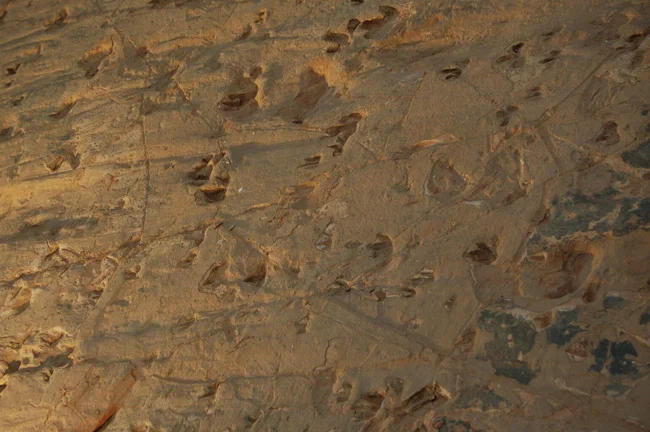
The tracks were left about 104-92 million years ago, during the Cretaceous period. What makes this place unique is that it represents a “frozen moment” in the life of dinosaurs: the tracks have preserved evidence of a predator chasing a herd of herbivorous dinosaurs. Although recent studies have cast doubt on this fact.
The tracks were discovered in the 1960s. And in the 1980s, a protective pavilion was built over the site to preserve the tracks from destruction.
Australia is the oldest continent
Australia is part of an ancient continental shield that formed billions of years ago. Much of its territory consists of ancient crystalline rocks such as granite and gneiss, which were formed in the Archean and Proterozoic eras (more than 2.5 billion years ago). These rocks underlie the continent and have undergone virtually no significant tectonic changes over the past hundreds of millions of years. 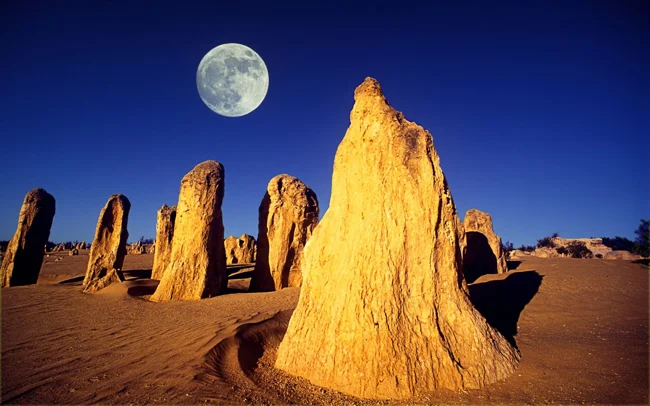
The last significant mountain-building processes here took place hundreds of millions of years ago, and since then erosion processes have prevailed, which “smooth out” the relief.
This fact leads to another fact ⬇
Australia has the oldest and lowest mountains
Australia does not lack mountains. We can recall the Great Dividing Range, the Australian Alps or the Blue Mountains. However, they are not distinguished by their great height. 
Blue Mountains.
The average height of the mountain ranges of Australia is only 1000 – 1500 m. Even the highest point of the continent – Mount Kosciuszko – has a height of only 2228 m.
This is due to the fact that the geological youth of the Australian mountains is far behind. For example, the Great Dividing Range began to form in the Paleozoic era – this is about 300-500 million years ago. 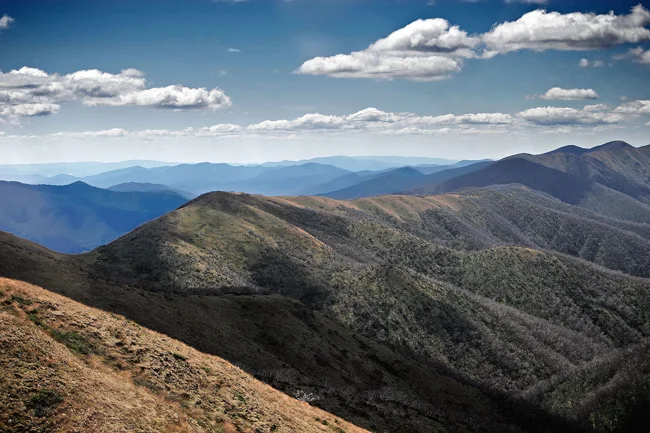
Since then, it has been subject to long-term erosion, which has led to its relatively low height compared to younger mountain ranges such as the Himalayas or the Andes. For example, the Himalayas began to form "only" about 50 million years ago, and they have been growing ever since.
Australia is home to one of the oldest tropical forests
The Daintree Rainforest is located in northeastern Australia, in the state of Queensland, near the Great Barrier Reef. It is about 180 million years old - it is one of the oldest tropical forests on the planet. The forest area is approximately 1200 km². 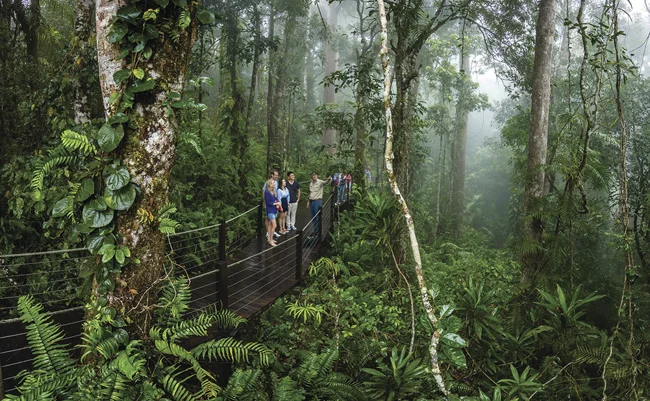
It is home to unique animals (such as cassowaries, ancient birds) and plants (rare ferns, orchids). The forest is home to the Aborigines, who have lived here for thousands of years and consider it sacred. Here you can see waterfalls, mountains and white sand beaches.
Off the coast of Australia is the world's largest sand island
Fraser Island off the east coast of Australia is the largest sand island in the world. It is about 120 km long and up to 24 km wide. 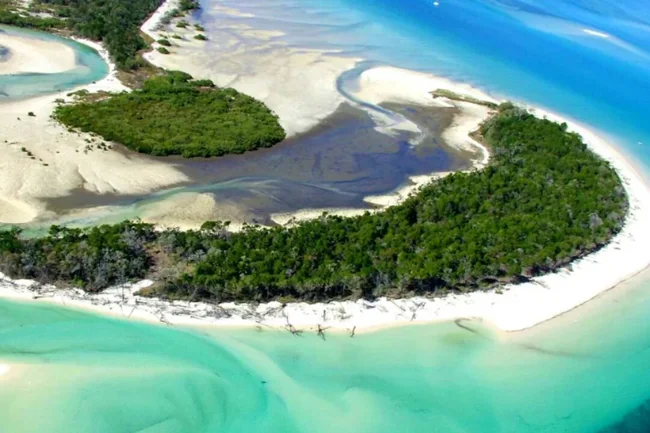
The island is famous for its many interesting natural features.
There are more than 100 freshwater lakes on the island, including the famous Lake Mackenzie with crystal clear water and white sandy beaches. The island is home to unique rainforests that grow right on the sand, which is a rare phenomenon. 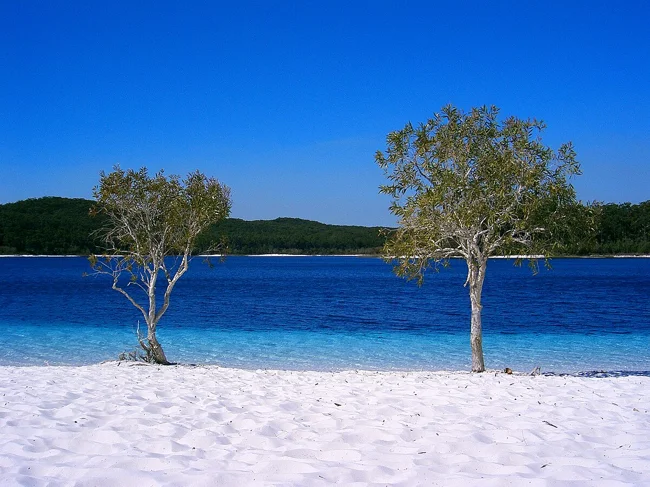
And how could it be without sand. There is not only sand here, but entire sand dunes! Some dunes are up to 240 meters high and are estimated to be hundreds of thousands of years old.
There are prison trees in Australia
We are talking about boabs. At the end of the 19th century, resourceful police officers set up temporary prisons in the hollows of particularly large trees. 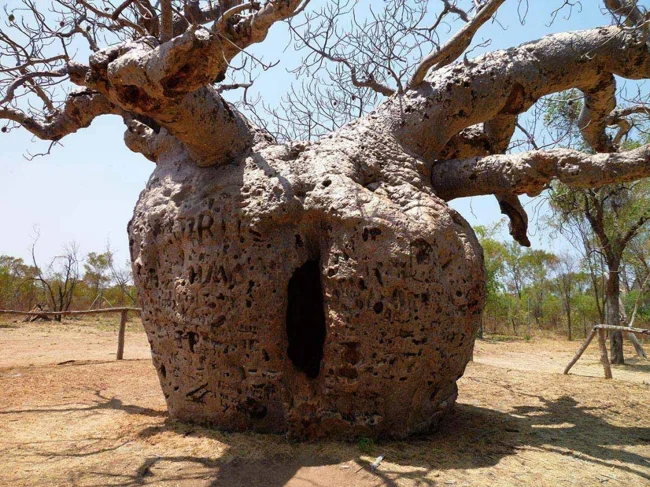
They held guilty aborigines. However, already at the beginning of the 20th century, these peculiar living prisons were not used for their intended purpose, becoming simply local attractions.
Australia has one of the longest straight stretches of road
Australia is full of not only natural but also man-made wonders. One of them is the section of the Eyre Highway that runs through the Nullarbor Plain. It is 146.6 km of absolutely straight road without turns. 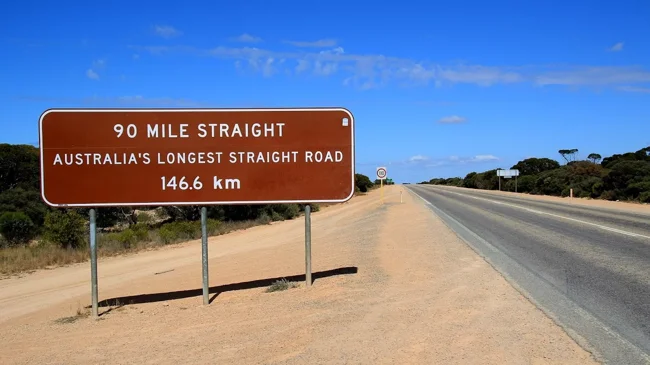
What is 146.6 km. It is not much less than the distance between Moscow and Tver (160 km). Now imagine that the two cities are connected by an absolutely straight road without any hints of turns. That is, just put your hands on the steering wheel and drive calmly :)
Australia has one of the most ancient underground cave systems
Australia has the Jenolan cave system, one of the oldest and largest in the world. Its age is estimated at 340 million years, and it is still actively studied by speleologists. 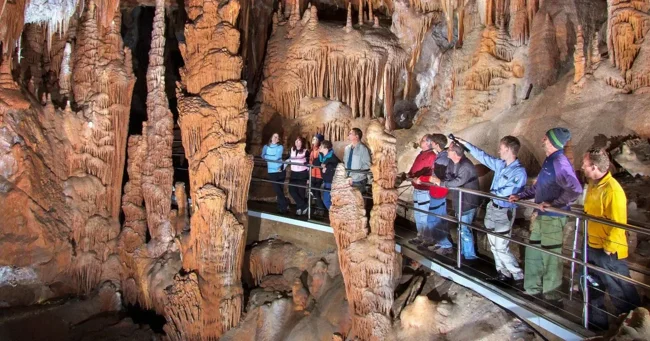
The unique system is located in the Blue Mountains. The total length of the caves is more than 40 km, and its area is 30.83 km². The Jenolan caves have more than 300 multi-level passages and entrances. Some of them are still waiting to be discovered.
Australia Has One of the Longest Beaches
80 Mile Beach in Victoria is one of the longest beaches in the world, at 230 km long. 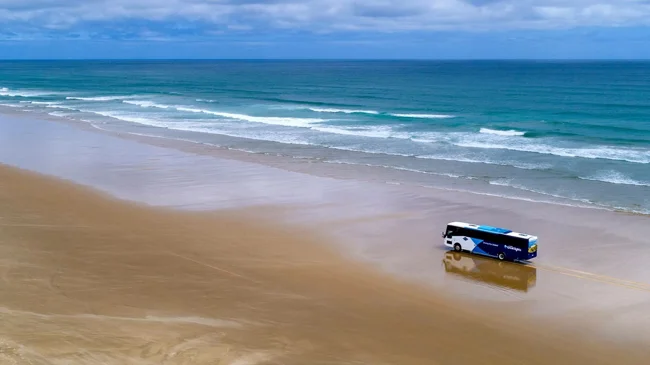
It is only slightly shorter than Brazil's Praia do Cassino Beach.
One of the largest kelp forests on the planet grows off the coast of Australia
Kelp forests are areas of the sea completely overgrown with seaweed. One of the largest of these is located in the northern part of the Great Barrier Reef, off the coast of Queensland.
It is a huge brown algae that grows on the ocean floor and can reach 15-30 meters in height. 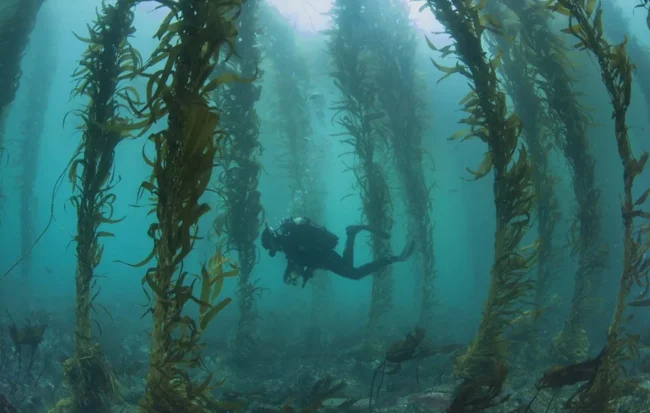
Underwater, kelps form dense "trees" that sway in the water, creating the feeling of an underwater forest. This unique forest is inhabited by fish, crabs, octopuses and other sea creatures, who use kelps as a shelter and a source of food.
The smallest penguin in the world lives in Australia
The smallest penguin in the world is the little penguin (Eudyptula minor). Its height is only 30-40 cm, and its weight rarely exceeds 1.5 kg. 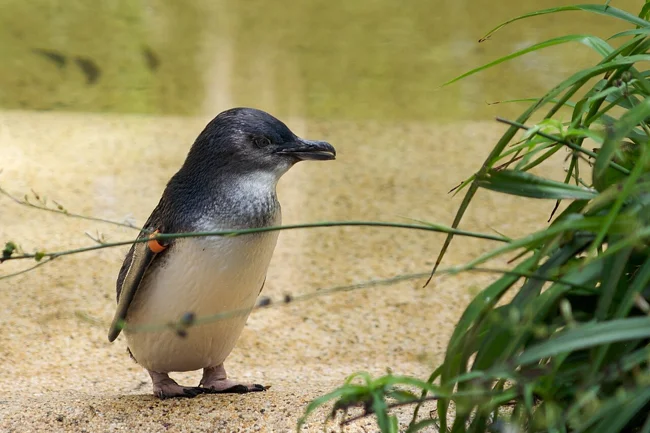
An unusual species of penguin lives mainly on the southern coast of Australia.
Australia has one of the cleanest lakes in the world
Lake Mackenzie is a large body of water on Fraser Island. It is 1,200 m long and 930 m wide. 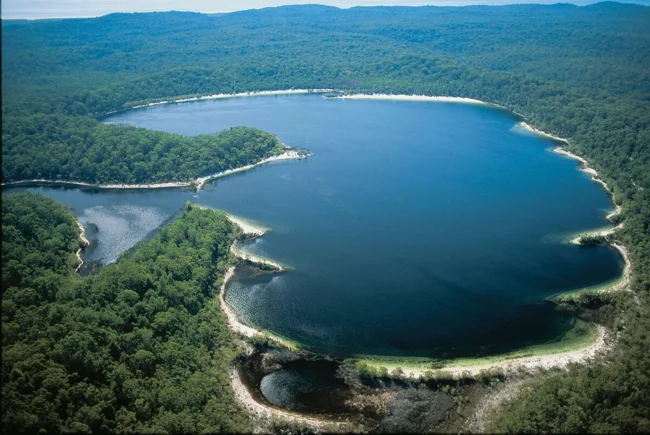
The lake is located on an elevation, so it is fed only by rainwater, not groundwater. The water also has a high acidity level. It is difficult for many microorganisms to live in such an environment, so the water here never “blooms”. Together, these two factors make Mackenzie the cleanest, well, one of the cleanest, lakes in the world.
Australia has one of the largest salt lakes
We are talking about Lake Torrens, which is located in South Australia. During high water, its length reaches 240 km, width 65, and area 5698 km². 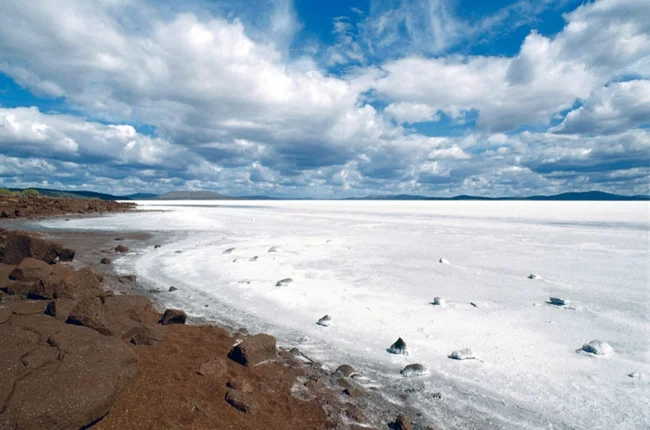
In terms of its size, Torrens is second only to the Great Salt Lake in the USA.
Australia has a lake that constantly changes shape
And one more fact about lakes. Lake Eyre in South Australia is known for the fact that its shape and size change depending on the season. During the dry season, it almost completely dries up, turning into a salt desert, and during the rainy season it fills with water, becoming one of the largest lakes in Australia. At such a time, its area can be 9,500 km². 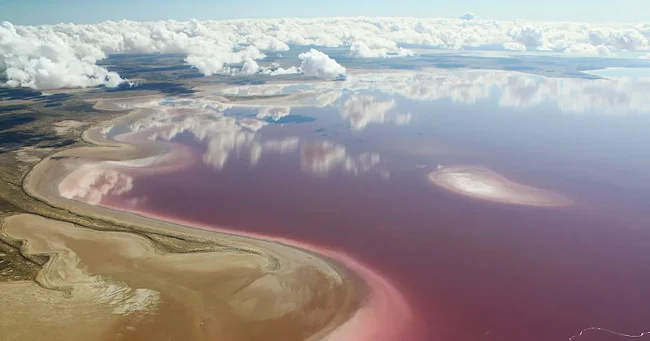
It is interesting that not only the shape and size of the lake changes, but also the composition of its water.
Eyre is considered a salt lake, not even all microorganisms survive here. However, after heavy floods, some freshwater fish can live in it.
Australia is home to the world's largest limestone plain
We are talking about the Nullarbor Plain, which is located in South Australia. This is the world's largest outcrop of bedrock limestone. It covers an area of about 200 km². 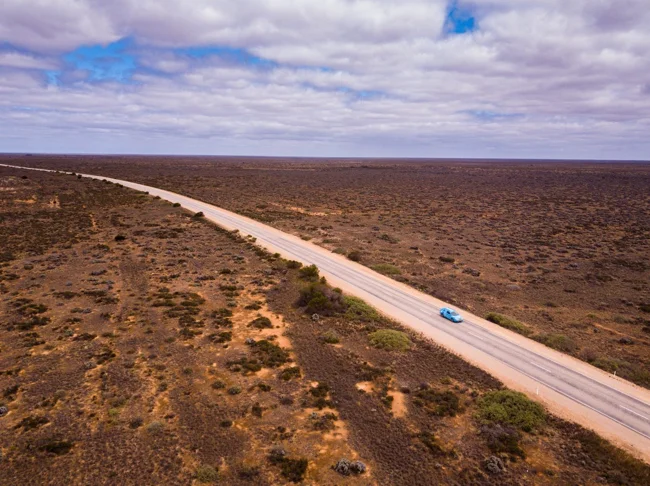
Where did so much limestone come from? It's simple. The Nullarbor was once the bottom of an ancient sea. Over millions of years, organisms, mainly various types of mollusks, died, leaving behind their calcareous skeletons.
Australia has the most direct railway in the world
We are talking about the Trans-Australian Railway. It crosses the Nullarbor Plain and stretches from Port Augusta in South Australia to Kalgoorlie in Western Australia. 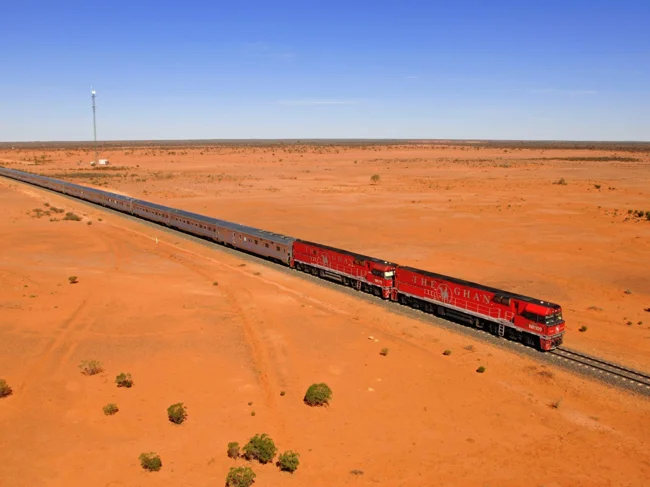
One of its sections, which runs along the Nullarbor Plain, is noteworthy. It is 478 km long and is absolutely straight.













